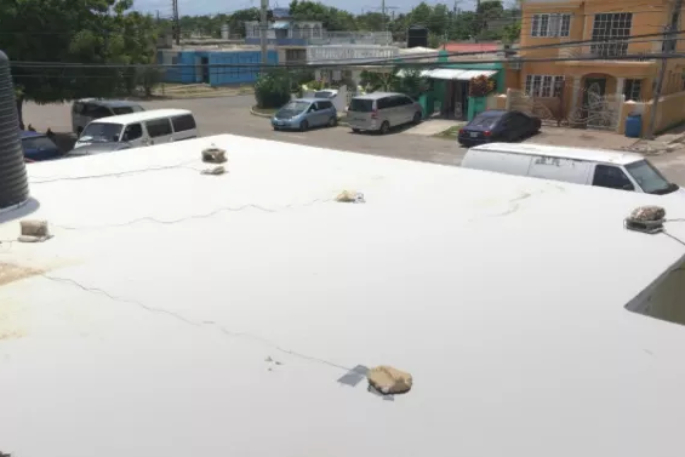Scientists will test ‘cool roofs’ in countries that are particularly vulnerable to the impacts of global warming.
As the world warms up, scientists are rigorously testing ‘cool roofs’, as a passive cooling system that could reduce the harms associated with heat stress.
Led by Waipapa Taumata Rau, the University of Auckland, the trial involves painting an affordable, non-toxic solution on roofs that reflects some of the sun’s hottest rays, reducing the temperature inside.
The trial will take place in Niue, Mexico, India and Burkina Faso, countries that are particularly vulnerable to heat-related health impacts.
“We've selected four sites that are representative of climate hotspots around the world and put together a really great team of scientists, industry and institutional collaborators to conduct this research,” says co-lead researcher Dr Aditi Bunker from the University of Auckland’s Te Poutoko Ora a Kiwa, Centre for Pacific and Global Health, and Heidelberg Institute of Global Health, Heidelberg University.
Heat exposure is associated with adverse health outcomes from dehydration and heat stroke to cardiovascular and metabolic conditions, as well as mental health.
“There’s plenty of evidence showing excess heat exposure affects health adversely, but we don’t know how we can adapt,” says Dr Bunker.
“So, we want to show, using the most rigorous scientific methods possible, how energy-saving interventions such as cool roofs play out and how they affect health.”
Cool roof use could not only improve wellbeing, but boost productivity and lower carbon emissions.
“By conducting this study, we can provide governments, donors and policymakers with information on exactly what benefits they can expect to see with cool roof use."
The University of Auckland team will work most closely with Niue.
“The climate crisis will lead to increased air temperatures in Niue, plus sea level rise, with major impacts on people’s lives and livelihoods, including their health and wellbeing, sleep patterns and productivity,” says Associate Professor Sir Collin Tukuitonga, co-director of Te Poutoko Ora a Kiwa.
“This study will help us understand the impact of reducing heat in people’s homes on their health and wellbeing."
Researchers plan to start by talking to community leaders about the acceptability of cool roof technology and how best to roll it out.
“We want to employ local staff to implement cool roofs and empower the local population to take ownership and drive this project,”says Dr Bunker.
The aim is for equal numbers of houses to be randomised to receive either cool or conventional roof coatings.
Smart devices will be issued to residents to measure their sleep, heart rate and activity.
Surveys will capture objective and subjective outcomes.
“We'll be able to see how cool roof use affects health parameters and also look at environmental outcomes – how do cool roofs reduce energy use and carbon emissions? Then, we'll be looking at economic outcomes and cost-effectiveness too,” says Dr Bunker.
The trial has just received a critical boost with the announcement of a share of £17.5 million (NZ$36.6m) from the charity, Wellcome. The funding will be distributed among nine projects globally, all testing adaptations with the potential to prevent heat-related illnesses and deaths.
Wellcome selected projects with immediate benefits for the communities, which are already being impacted by global warming.
Wellcome’s climate and health programme aims to ensure that researchers are producing evidence that can be directly used by governments, policy-makers and funders.
The project will establish public-private partnerships with leading industry manufactures of cool roof including Sika AG, Soprema and Holcim.
Results from the ‘cool roofs’ trial will be published in scientific journals and presented in workshops and reports.



1 comment
Global Warming Now?
Posted on 28-07-2023 07:25 | By Thats Nice
It's not called "Global Warming anymore lol". Weather maps from years ago showing temperatures in "green" of 27 degrees are now changed to "red" to show extreme heat with a temperature that is actually 1 degree lower than the older map. Talk about manipulation overload. I'm sure the colour of your roof will have an impact but please stop saying it's global warming. "Evidence showing excess heat exposure affects health adversely". Is this the same evidence that the Gisborne floods were due to climate change?
Leave a Comment
You must be logged in to make a comment.